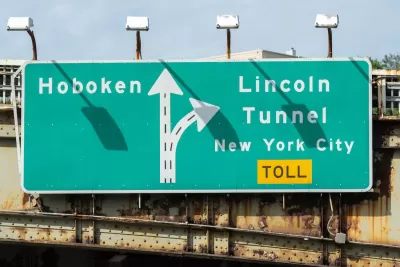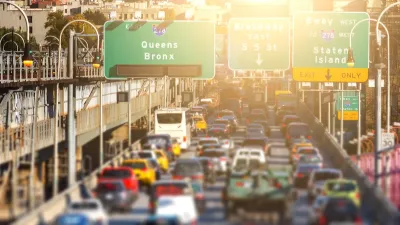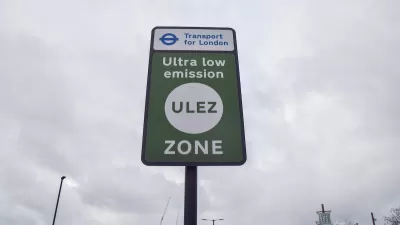The program has taken tens of thousands of vehicles off the city’s roads in its first week.

After a protracted battle to get the program passed, New York City’s congestion pricing program is already yielding positive results, according to a New York Times article by Ana Ley, Winnie Hu, and Keith Collins. Despite opposition from local leaders and residents, only 11 percent of people who work in the tolling zone drove there before congestion pricing began.
Data from the program’s first week reveals “tens of thousands fewer vehicles entering the busiest parts of Manhattan below 60th Street,” although subfreezing temperatures could also have contributed to the drop in traffic. “Yet the data released by the M.T.A. is the first hard evidence that the congestion pricing plan, the first of its kind in the nation, had a promising start toward its ambitious goal of reducing gridlock,” the authors note.
According to the article, vehicles traveling westbound on the Williamsburg Bridge traveled at a speed 45 percent faster than at the same time last year, and commuters say their daily trips are much shorter. Transit buses also experienced shorter trips, with some routes seeing trips four minutes shorter than before.
FULL STORY: Less Traffic, Faster Buses: Congestion Pricing’s First Week

Alabama: Trump Terminates Settlements for Black Communities Harmed By Raw Sewage
Trump deemed the landmark civil rights agreement “illegal DEI and environmental justice policy.”

Planetizen Federal Action Tracker
A weekly monitor of how Trump’s orders and actions are impacting planners and planning in America.

The 120 Year Old Tiny Home Villages That Sheltered San Francisco’s Earthquake Refugees
More than a century ago, San Francisco mobilized to house thousands of residents displaced by the 1906 earthquake. Could their strategy offer a model for the present?

Seattle Voters Approve Social Housing Referendum
Voters approved a corporate tax to fund the city’s housing authority despite an opposition campaign funded by Amazon and Microsoft.

The Five Most-Changed American Cities
A ranking of population change, home values, and jobs highlights the nation’s most dynamic and most stagnant regions.

USDOT Repeals Emissions Monitoring Rule
A Biden-era regulation required states to report and plan to reduce transportation-related emissions.
Urban Design for Planners 1: Software Tools
This six-course series explores essential urban design concepts using open source software and equips planners with the tools they need to participate fully in the urban design process.
Planning for Universal Design
Learn the tools for implementing Universal Design in planning regulations.
Clanton & Associates, Inc.
Jessamine County Fiscal Court
Institute for Housing and Urban Development Studies (IHS)
City of Grandview
Harvard GSD Executive Education
Toledo-Lucas County Plan Commissions
Salt Lake City
NYU Wagner Graduate School of Public Service





























